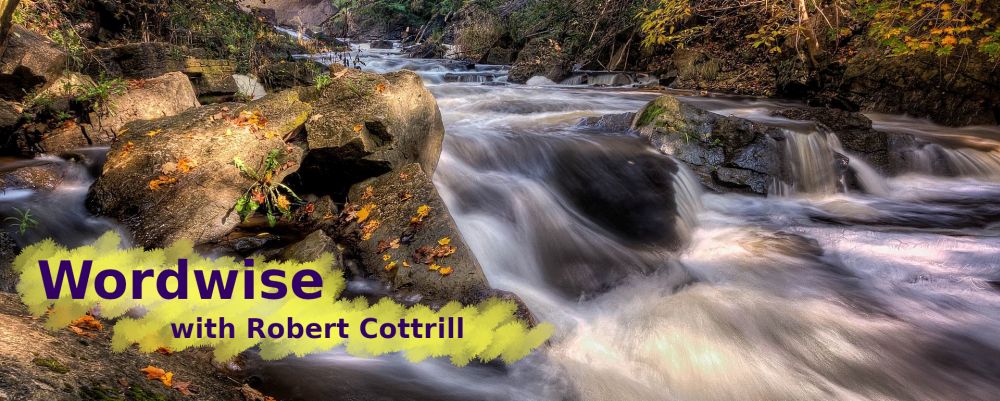No, Not Despairingly
Words: Horatius Bonar (b. Dec. 19, 1808; d. July 31, 1889)
Music: Kedron, by Ann Baird Spratt (b. ___, 1829; d. ?)
Note: Horatius Bonar was an influential Scottish pastor and hymn writer. With more than six hundred hymns to his credit, he eventually became known as “the prince of Scottish hymn writers.” Ann Spratt was a contemporary of Bonar’s, and was thirty-seven when the present hymn was published. Nothing more is known of her.
(Stanza numbers in brackets below refer to the stanza number in The Cyber Hymnal. Find the link at the bottom of the article.)
As I write this, the disgraceful antics of the mayor of a certain city to the east have been in the news. For many, at home and abroad, it’s been entertaining, in a bizarre way. For others it’s been an outrage and a painful embarrassment.
It’s not only the drunken binges, the temper tantrums, and streams of profanity. There’s something more. He’s lied repeatedly, until the evidence has backed him into a corner. Then, he’s confessed that, yes, it’s true, but… First, he tried to blame the reporters. “You didn’t ask your question in the right way.” Then, it was a litany of other excuses. “I’m not perfect. I’m only human, I make mistakes. You do the same things.” Or, “It was the drink talking.” Or, “It’s my disease.”
It got me thinking: when is a confession of wrongdoing not a confession? When is it simply a thinly veiled self-justification? Or, in that man’s case, a piece of clever politicking, designed to win sympathy, and more votes. This is an important matter, because it applies to our own relationships with others, and with God.
Consider some weak or inadequate ways to deal with wrong. There can be the insincerity of false tears and feigned regret. Pharaoh was guilty of that (Exod. 9:27, 34-35). Or perhaps there’s genuine regret over being caught, or about the consequences, but not regarding the act itself. That was Cain (Gen. 4:13). There can also be an attempt to put the blame elsewhere: “I was foolish, but it was the booze’s fault.” Or, “I was wrong, but you were too.” Adam and Eve did that (Gen. 3:12-13).
There’s also the weak “If I was wrong, I apologize.” Come on, now, you know whether you were in the wrong or not. Drop the “if.” Come right out with it: “I was wrong when I did such-and-such.” And often, rather than rehearsing the details of some disgraceful conduct, it’s better to focus on the root problem. Is it something like greed, or lust, or pride? Is it a lack of love and kindness? Then, that is how we have not only wronged that other person, but we’ve sinned against the Lord.
The Bible says, “Godly sorrow produces repentance” (II Cor. 7:10). That is, the kind of regret that pleases God is heart-deep, and produces sincere confession and an appropriate change of conduct. King David repented like that. The Bible describes how he stole another man’s wife, then had the husband killed so he could legally marry the widow. His great sin bothered him for months, until he finally acknowledged it to God, and cast himself upon God’s mercy and grace (Ps. 32:3-5; Ps. 51:1-4, 10, 12).
Several of Bonar’s hymns remain in our hymnals, almost two centuries later. But this one–that he called “Confession and Peace”–is not commonly used today. Maybe because of its emotional power concerning a subject we’d rather not talk about or even face. Sin. The hymn says:
(1) No, not despairingly come I to Thee;
No, not distrustingly bend I the knee:
Sin hath gone over me, yet is this still my plea,
Jesus hath died.
(2) Ah! mine iniquity crimson hath been,
Infinite, infinite–sin upon sin:
Sin of not loving Thee, sin of not trusting Thee–
Infinite sin.
Then, Dr. Bonar claims God’s promise to believers that, “If we confess our sins, He is faithful and just to forgive us our sins and to cleanse us from all unrighteousness” (I Jn. 1:9).
(3) Lord, I confess to Thee sadly my sin;
All I am tell with Thee, all I have been:
Purge Thou my sin away, wash Thou my soul this day;
Lord, make me clean.
(4) Faithful and just art Thou, forgiving all;
Loving and kind art Thou when poor ones call:
Lord, let the cleansing blood, blood of the Lamb of God,
Pass o’er my soul.
Finally, there is the peace and restored fellowship with the Lord that comes when we deal with sin in our lives.
(5) Then all is peace and light this soul within;
Thus shall I walk with Thee, the loved Unseen;
Leaning on Thee, my God, guided along the road,
Nothing between.
Questions:
- What are some of the practical consequences of sin, clung to and unconfessed, in the believer’s life?
- What are the contrasting results when sin is dealt with sincerely before God?
Links:
- 19 December 1808 – Horatius Bonar Born
- No, Not Despairingly (The Cyber Hymnal)
- No, not despairingly (Hymnary.org)
